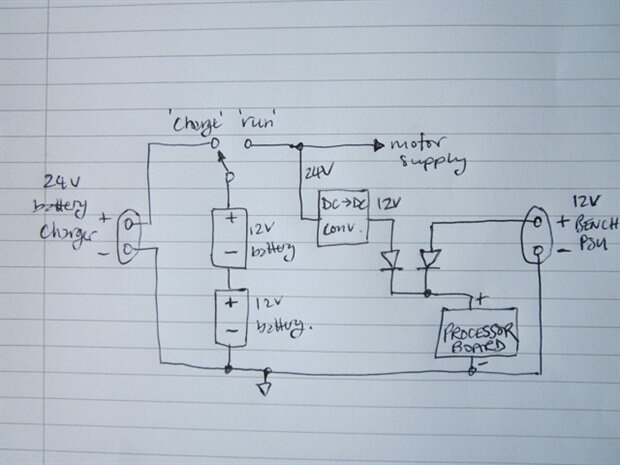Hi, I'm using an Intel Edison on Arduino. It is currently powered by a 12v/10A power supply. I plan to put in batteries later.
I'm making a larger machine, and need some decent torque to run it. I had 2 motor scooters that I honestly found in the trash can a few years back. I took them out hoping to use them for parts when the time came (now). They use a proprietary charging port, running on 24v. It contained two 12v batteries, and the motors are labeled as rated 12v/100W.
I'm having some issues with getting it to run in general. I've connected my 12v/10A power supply to it with weak connections, and had it run, but somewhat weakly. I'm sure at least part is how old and rusted the chain is.... these things have been outside for probably about 2 years in the elements.
What I know I'm going to need help with / questions answered:
-I plan to use a DPDT relay to control the motors. Unless someone has a better option. Cheapest ideas? I'm connecting 2 motors, and using differential steering.
-Are there certain pins (let's say PWM) that may work better for controlling these relays?
-Since the motors are rated 100A, will I be able to just give it lower voltage at higher amperage, since I only need torque, not speed?
-How can I transform the 12v output from my batter(y/ies) to a 24v line to drive these motors? Series circuit would be out, because the Arduino will be running off that line.
Again, cost is one of my greatest concerns. But, weight is a secondary.
Bonus brownie points for if you can tell me what I can use for charging 12v batteries with my 12v/10A power supply with Type-M plug (5.5mm outer diameter, 2.1m inner), and how to tell if one of these batteries is bad or just dead that I ripped out of the scooter.


